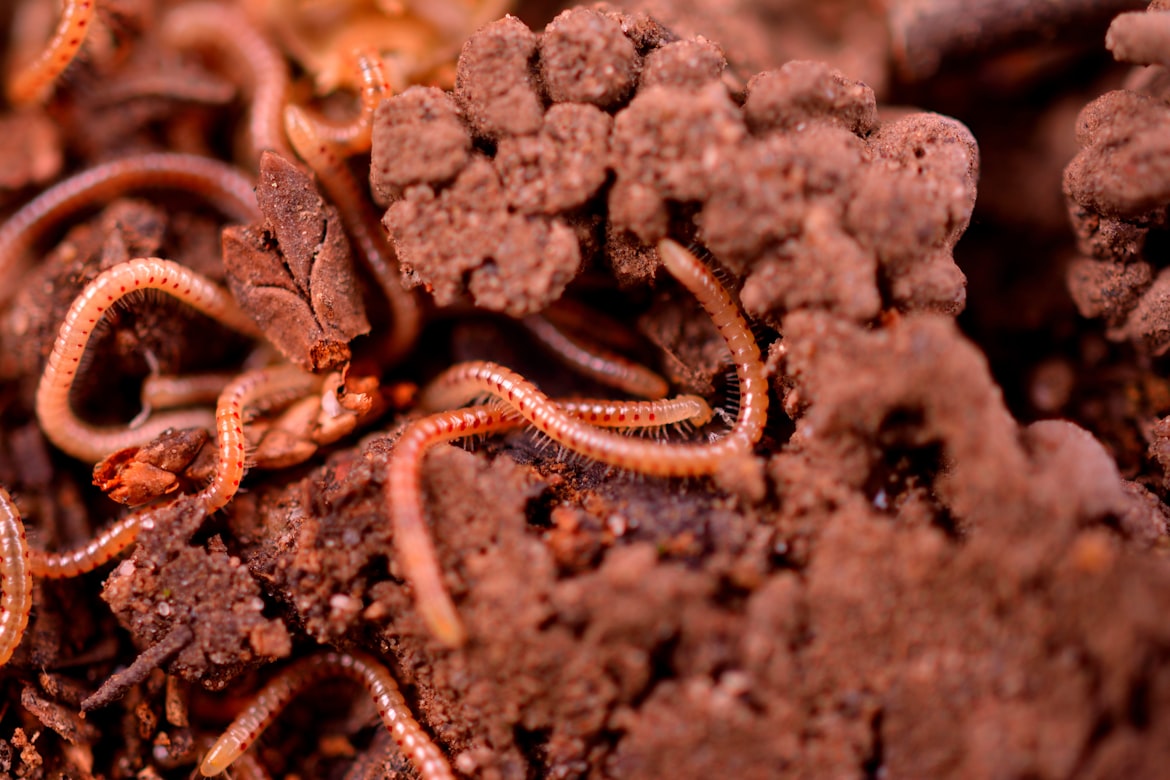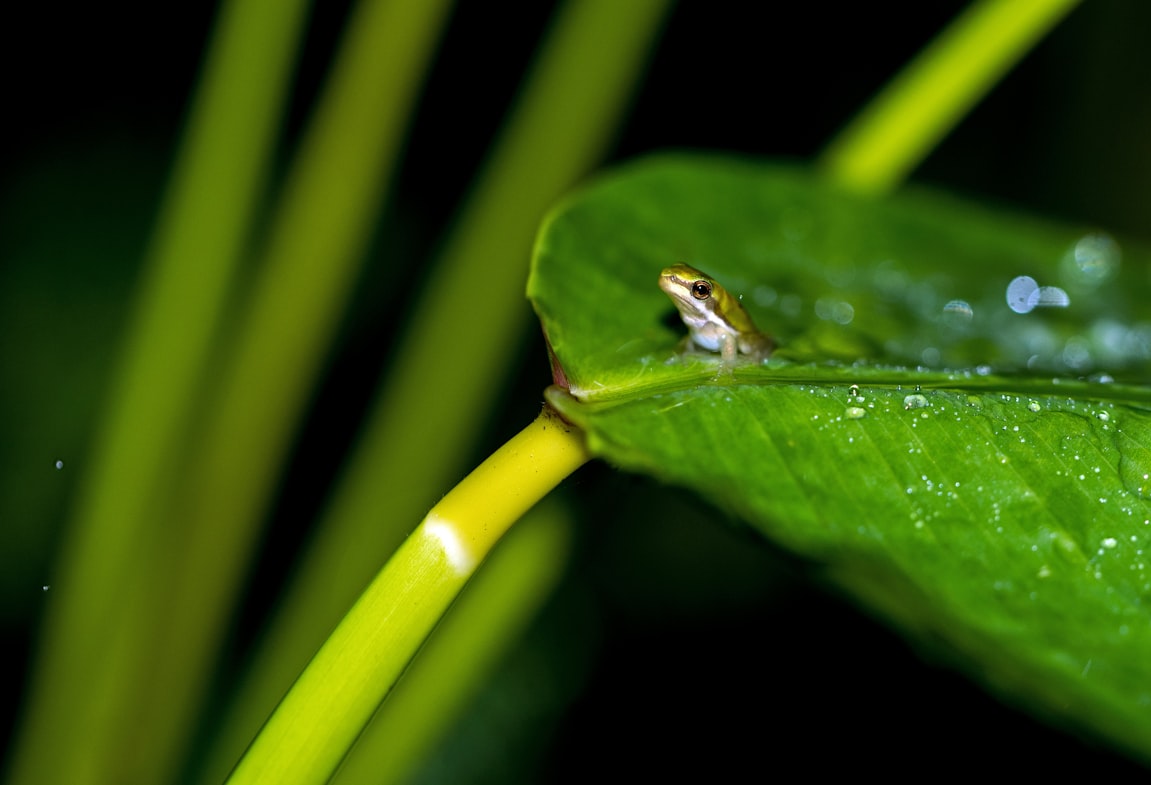As an Amazon Associate I earn from qualifying purchases.
What Do Baby Tree Frogs Eat?
Tree frogs are amazing creatures, and there are dozens of species that may be kept as pets. The American Green Tree Frog is the most frequently encountered variety, and it’s also one of the simplest to care for. If you’re interested, they’re quite stunning frogs. They should not be touched and prefer to live alone. These little frogs may live for up to five years in captivity if given proper care and nutrition.
Tree frogs are found in a variety of hues, ranging from green to brown to gray. It’s been discovered that most of the brightly colored tree frogs are harmful. Some species have the ability to alter their coloration in order to blend in with their environment. Their bodies may be marked by lines, spots, and other patterns. Tree frogs have a tiny body and range in size from 1 to 5.5 inches long, weighing between 2 and 17 grams. These frogs may live for two to four years or more and are well adapted to arboreal life because of their powerful and lengthy legs that allow them to leap and climb. The toes of tree frogs are sticky, and they use them to cling to stems, branches, and leaves. Their large, round, and protruding eyes give them binocular vision. Tree frogs’ tongues are sticky in order for them to capture their food.
What Do Baby Tree Frogs Eat?
Tree frogs are generally nocturnal, but if they’re hungry, they may go out and forage during the day. Their diet varies somewhat by species and geographic location, although it is mostly carnivorous in nature. Some species, especially the larger ones, consume worms, insects, and small invertebrates. It’s also been reported that certain kinds, particularly the bigger ones, prey on rodents, other frogs, and tiny fish. The Cuban tree frog is famous for its feeding habits since it is the biggest tree frog in North America.
They can hunt and feed on a wide range of prey, including insects, spiders, snails, snakes, other frogs, lizards, bird hatchlings, and crustaceans, and more!
What Do Baby Tree Frogs Eat in Captivity?

The majority are beautiful in appearance and calm in disposition. Some species are highly sought after as pets. The green tree frog, especially the American green tree frog, Australian green tree frog, and red-eyed frogs are among the most popular. Keeping a tree frog as a pet, however, may appear to be simple. You must have considerable expertise in frog care if you want to keep one successfully. Their demands vary depending on the species and size of the animal.
You will need a supply of live crickets, mealworms, and flies to feed your pet tree frogs. As previously said, you must satisfy their particular demands. Green tree frogs eat crickets, mealworms, and earthworms. Alternatively, Pacific tree frogs live on spiders, flies, beetles, and ants. In general, tree frogs consume insects and worms. Ensure that the prey’s size is appropriate for the frog.

You may feed your baby tree frogs flies, cockroaches, moths, or other similar meals on a daily basis. Adult frogs require two to three feeding sessions each week. Every second day, feed your frogs two to four small crickets. Before you offer the frog, dust the prey with calcium and multivitamin powder. Water with no chlorine should be used to clean the frog once a day, ideally in the morning. It’s also advisable to have a separate feeding enclosure. Food, such as live crickets, can be purchased at the pet store if you’re raising a pet tree frog. Algae and pond plants are eaten by tadpoles, but they become carnivorous as they mature. Lettuce leaves may also be used to feed these frogs’ tadpoles.

What do Baby Tree Frogs Eat in The Wild?
Tree frogs that spend the majority of their lives on vegetation are nocturnal and feed mostly at night, but if they are hungry enough, they may eat during the day. Tree frogs, like other frogs, spend the majority of their lives in trees and tall plants, eating insects and grubs that abound in their natural habitat. Their diet varies somewhat based on place and species, although all tree frogs are carnivores by nature.

In the wild, most tree frog species eat insects, larvae, worms, and other small-sized invertebrates, while certain bigger ones may consume small animals such as spiders, snails, lizards, snakes, fish, and even other frogs.
In general, tree frogs are omnivores that will hunt for anything they can fit into their mouths as they move up and down the trees. They’re mostly nocturnal but are occasionally active during the day. They use their long, sticky tongues to hunt and capture food rather than stalk and capture it, although larger species may leap toward bigger, faster-moving prey like lizards. Tree frogs have tiny teeth, but they typically swallow their prey whole, so the type of food they can eat is limited.
How To Feed Baby Tree Frogs?

Step 1
In a 76 L tank, keep up to two gray tree frogs. Gray tree frogs are lively during their sleepless hours at night, and they require a lot of room to swivel about. Provide a tank with a capacity of at least 76 L and no more than 2 frogs. Choose a tank that’s at least two times the length of the widest part. These frogs might feel calmer in an environment that is not completely open on all sides. Cover three sides of the aquarium with a black poster board to give it an enclosed feeling. Cover the outside of the tank with the poster board so that it does not get damp.
Step 2
To make a simple frog habitat, use coconut husk fiber or paper towels as a substrate. Soil or paper towels are also excellent substrates options. Large, smooth river rocks are also acceptable. As a result, it’s critical not to use aquarium gravel or tiny bark pieces since your frogs could consume them by mistake. The substrate should simply be deep enough to cover the bottom of the tank.
Step 3
Provide a variety of platforms, climbing branches, and hiding spots for your gray tree frogs. If you want to keep your gray tree frog healthy and happy, provide areas for them to climb and hide. Furnishings such as branches, hollow logs, driftwood pieces, or even lengths of PVC pipe can all help. Live or artificial plants can be used to create shade and cover around or over the climbing and perching areas. Weeping figs, hibiscus, or umbrella plants are all excellent living plants. If you’re worried about the frogs finding their food, stick to two or three climbing twigs. At the tank’s bottom, leave some vacant space.
Step 4
Offer your frogs a shallow soak dish. Keep a small bowl or dish in the aquarium for gray tree frogs to submerge themselves in and relax at any time. Make sure the bowl is continuously refreshed with clean, warm, dechlorinated water. Misting the tank’s interior several times a week may also help to maintain a proper humidity level. If your home is extremely dry, daily misting of the tank is recommended.
Step 5
Provide your frogs with a varied diet of insects. While crickets should be the focal point of your frog’s diet, you may also give them a variety of other invertebrates. Flies, silkworms, moths, earthworms, and waxworms are all excellent options. Sprinkle powdered calcium and vitamin supplement on your frogs’ food to ensure that they are getting all of the nutrients they require. Baby gray tree frogs must consume food every day, while adults should do so twice or three times each week. Crickets should be offered as a primary source of food, but occasionally in addition to another alternative, such as moths or waxworms, as a treat. Gray tree frogs will usually consume 3 to 6 crickets or other similarly sized invertebrates at one feeding.
What are The Natural Predators of Baby Tree Frogs?
The tree frog family contains 360 species, including baby tree frogs or hylids, which may be found all over the world. Australia and New Guinea are home to more than 700 different species. Hylids span a wide variety of habitats and lifestyles. Certain tree frogs may be found on the ground or even underground. They can survive despite tremendous predation everywhere they reside, owing to the fact that snakes, birds, carnivorous animals, and fish apply great harm.
Snakes
Snakes are notable predators of tree frogs. They primarily search for food using chemical indicators rather than visual ones, eliminating the camouflage advantage that tree frogs have. Snakes in general are skilled climbers that can climb trees, as well as tree frogs. Rat snakes and tree boas are two species that prey heavily on frogs.
Carnivorous Mammals
Squirrels, raccoons, and otters are all predators of tree frogs. The acute eyesight and nimble hands of these two species aid in the detection and capture of amphibian food. Tree frogs may be captured in trees, but they are most frequently caught when traveling to and from breeding sites. Bats have been observed discriminating edible species from poisonous ones based on their calls alone.
Birds
Bats, for example, have excellent eyesight and can spot even the most well-camouflaged tree frogs. The bird-poop frog, for example, attempts to avoid notice from birds by mimicking something the birds never look for, such as bird droppings. Red-shouldered hawks, blue jays, and owls are all species that consume tree frogs.
Fish
It’s vital to remember that most frogs, including tree frogs, begin their lives as water tadpoles. When a pair of common tree frogs reaches full maturity, it’s generally considered politically incorrect to kill them. Many frog species avoid being eaten by fish by laying their eggs only in water without fish, such as temporary puddles. This is known as “hydrophobia.” Green tree frogs are resistant to fish pressure, although the reasons for this aren’t well-known.
How Do Baby Tree Frogs Protect Themselves from Predators?

Poison dart frogs’ vivid blue, yellow, and orange coloration is an excellent example of warning coloration, telling potential attackers to avoid. According to new research, these bright colors may actually be aiding the frogs in hiding in plain sight.
The dyeing poison frog, from South America’s Guiana Shield, an ancient geological formation beneath the northeastern coast of Venezuela and Brazil’s lowland tropical rainforests, feeds on plants growing near the ground. The color of the frogs is black with a brilliant yellow ring around their head and back, which may be broken or joined to form an eight. The pattern is unique to each frog, much like a fingerprint.
Predators generally avoid brightly colored frogs because they are poisonous. This, however, isn’t always the case. Naïve predators disregarded the warning while some birds and snakes appeared to be able to consume poisonous frogs without suffering significant injury.
Researchers wanted to know whether poison dart frogs employ camouflage in order to defend themselves. To discover out, they ran computer models of predator vision on photographs of the frogs. According to their findings, however, despite being apparent up close, frog species’ hues and patterns blend into the surrounding jungle as viewing distance increases.
To assess these outcomes, the researchers put model frogs on different backgrounds in a French Guiana rainforest to see how wild predators would interact. When frog models were placed on an image of barren soil or a colored paper square, predators attacked them more frequently, but not as much when they were on the actual rainforest floor.
Amazon and the Amazon logo are trademarks of Amazon.com, Inc, or its affiliates.

